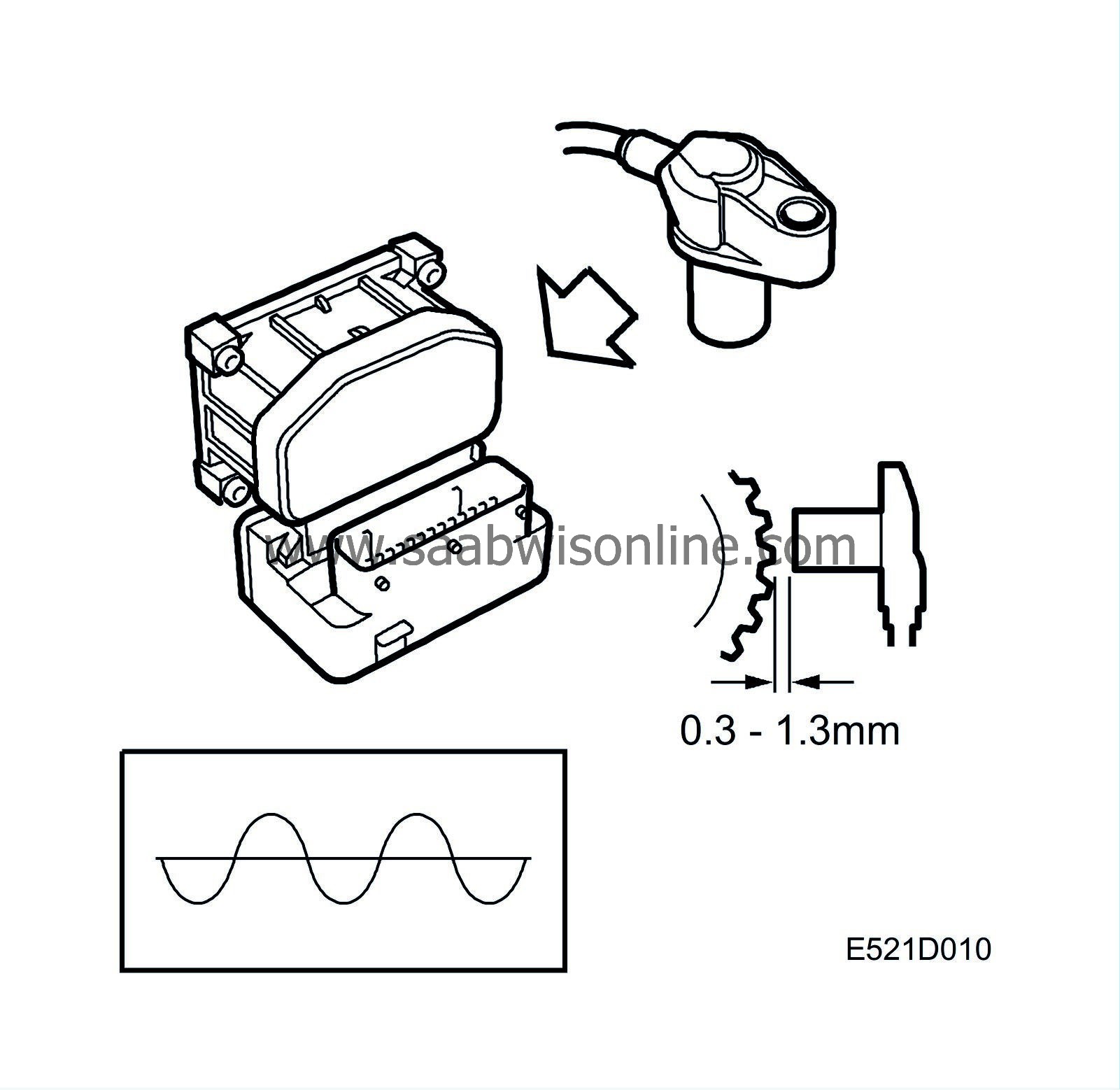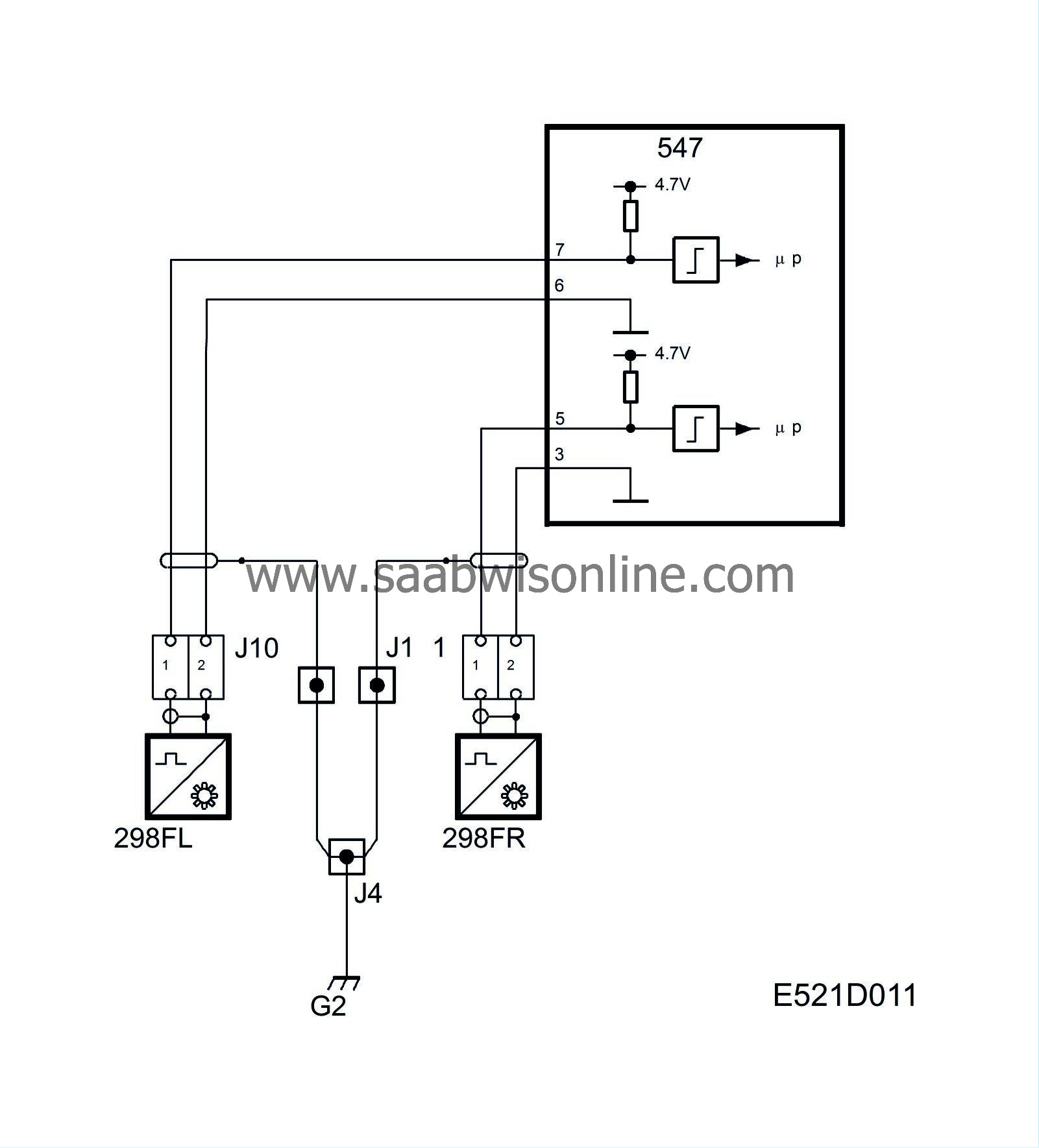Front-wheel sensors
| Front-wheel sensors |
The front left wheel sensor sends a wheel-speed signal to pin 7 on the control module. The sensor is grounded via pin 6.
The front right wheel sensor sends a wheel-speed signal to pin 5 on the control module. The sensor is grounded via pin 3.
The sensor unit has a toothed wheel with 29 teeth and an inductive sensor.
The inductive sensor works like a small alternator, the sine-wave voltage of which increases with increasing wheel speed. The sine-wave voltage alternates between positive and negative polarity, which is achieved by alternate teeth and gaps on the toothed wheel. The control module uses this change of polarity as a pulse sensor. The frequency of the pulses increases with the speed of the wheel.
With a multimeter set for AC voltage connected between the two leads of the sensor, a reading of >100 mVAC should be obtained when the wheel is rotated one revolution per second.
A wheel speed of 20 km/h gives about 5 VAC.


The distance between the sensor and the toothed wheel should be 0.3-1.2 mm. This distance is adjustable.
The control module uses the frequency to measure the vehicle speed.
Diagnostics
If there is a break in the front left circuit, diagnostic trouble code C1372 is set, the ABS function is disabled and the ABS warning lamp lights up.In the event of a mechanical fault or malfunction in the front left circuit, diagnostic trouble code C1371 is set, the ABS function is disabled and the ABS warning lamp lights up.
If there is a break in the front right circuit, diagnostic trouble code C1377 is set, the ABS function is disabled and the ABS warning lamp lights up.
In the event of a mechanical fault or malfunction in the front right circuit, diagnostic trouble code C1376 is set, the ABS function is disabled and the ABS warning lamp lights up.


